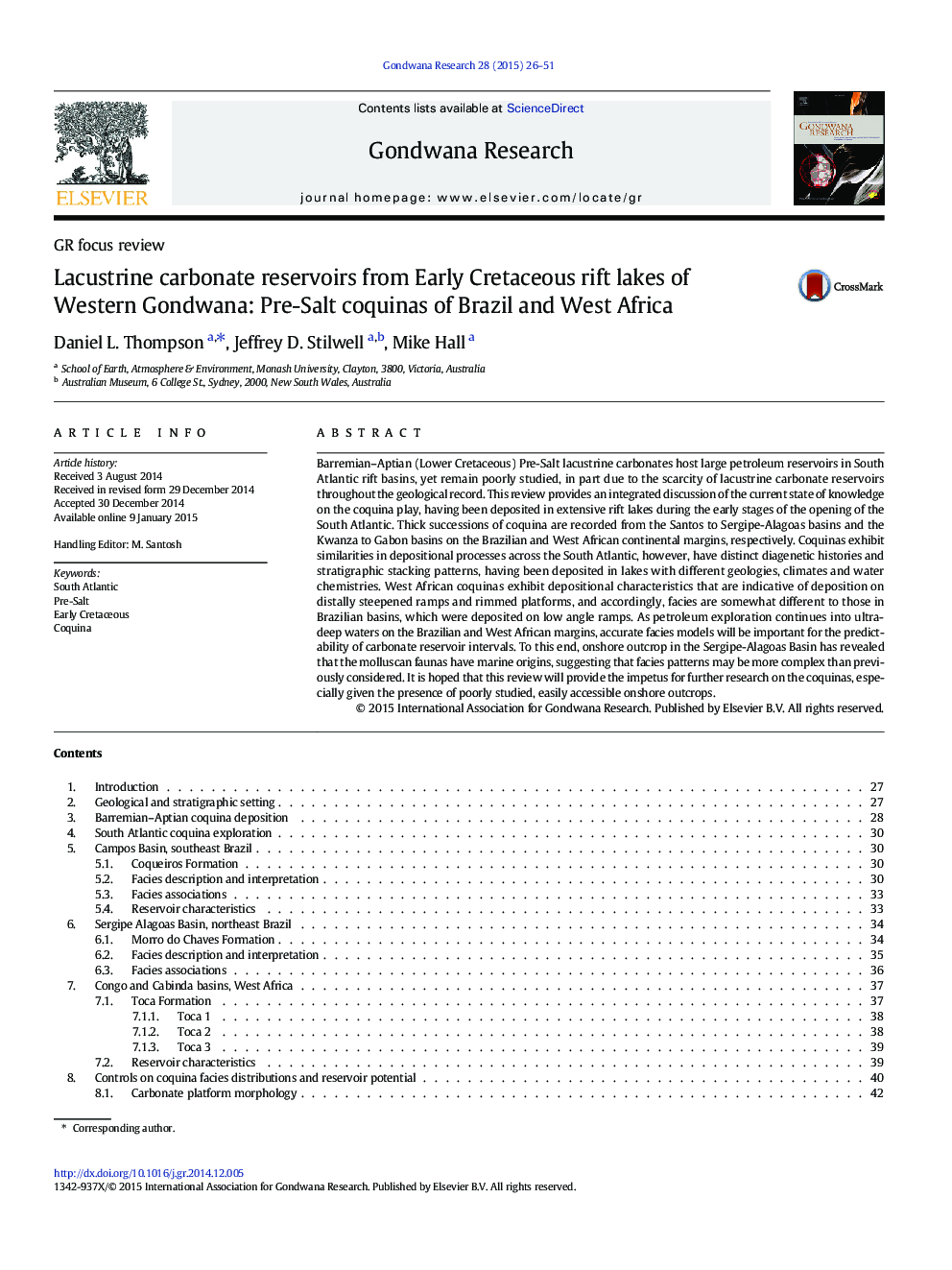| کد مقاله | کد نشریه | سال انتشار | مقاله انگلیسی | نسخه تمام متن |
|---|---|---|---|---|
| 4726794 | 1356347 | 2015 | 26 صفحه PDF | دانلود رایگان |
• Pre-Salt coquinas exhibit significant variability in stratigraphy and facies across basins.
• Facies associations are complex due to rapid vertical and lateral facies heterogeneity.
• Latitudinal climatic variations facilitated differences in stratigraphic stacking patterns.
• Reservoir quality is enhanced by hydrothermal dolomitisation, fracturing and dissolution.
Barremian–Aptian (Lower Cretaceous) Pre-Salt lacustrine carbonates host large petroleum reservoirs in South Atlantic rift basins, yet remain poorly studied, in part due to the scarcity of lacustrine carbonate reservoirs throughout the geological record. This review provides an integrated discussion of the current state of knowledge on the coquina play, having been deposited in extensive rift lakes during the early stages of the opening of the South Atlantic. Thick successions of coquina are recorded from the Santos to Sergipe-Alagoas basins and the Kwanza to Gabon basins on the Brazilian and West African continental margins, respectively. Coquinas exhibit similarities in depositional processes across the South Atlantic, however, have distinct diagenetic histories and stratigraphic stacking patterns, having been deposited in lakes with different geologies, climates and water chemistries. West African coquinas exhibit depositional characteristics that are indicative of deposition on distally steepened ramps and rimmed platforms, and accordingly, facies are somewhat different to those in Brazilian basins, which were deposited on low angle ramps. As petroleum exploration continues into ultra-deep waters on the Brazilian and West African margins, accurate facies models will be important for the predictability of carbonate reservoir intervals. To this end, onshore outcrop in the Sergipe-Alagoas Basin has revealed that the molluscan faunas have marine origins, suggesting that facies patterns may be more complex than previously considered. It is hoped that this review will provide the impetus for further research on the coquinas, especially given the presence of poorly studied, easily accessible onshore outcrops.
Figure optionsDownload as PowerPoint slide
Journal: Gondwana Research - Volume 28, Issue 1, August 2015, Pages 26–51
